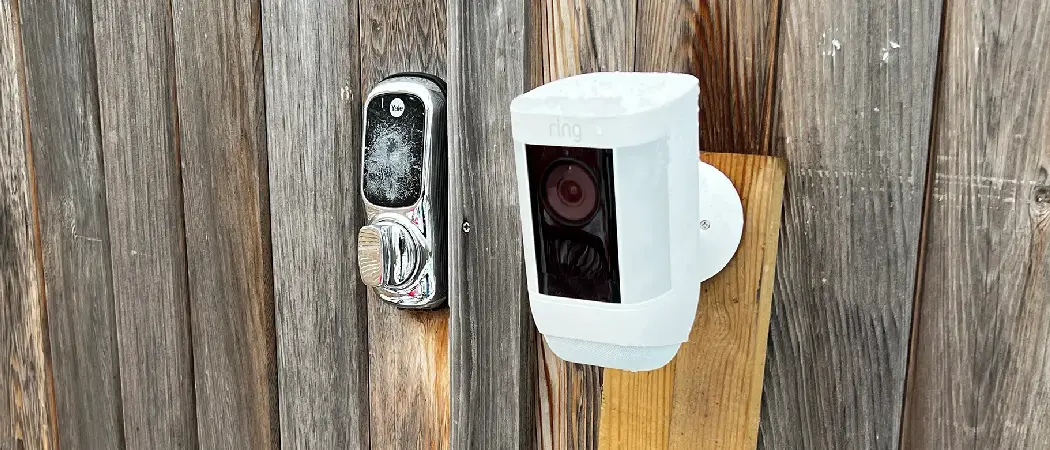In the quiet of a suburban morning, a flickering light from a porch camera captures more than just the early risers. It’s a sign of the times, where a reported 47% of Americans now use some form of home surveillance, with gadgets like Ring cameras at the forefront of this cultural shift. Ring, Amazon’s brainchild, has surged in popularity due to its promise of safety and security.
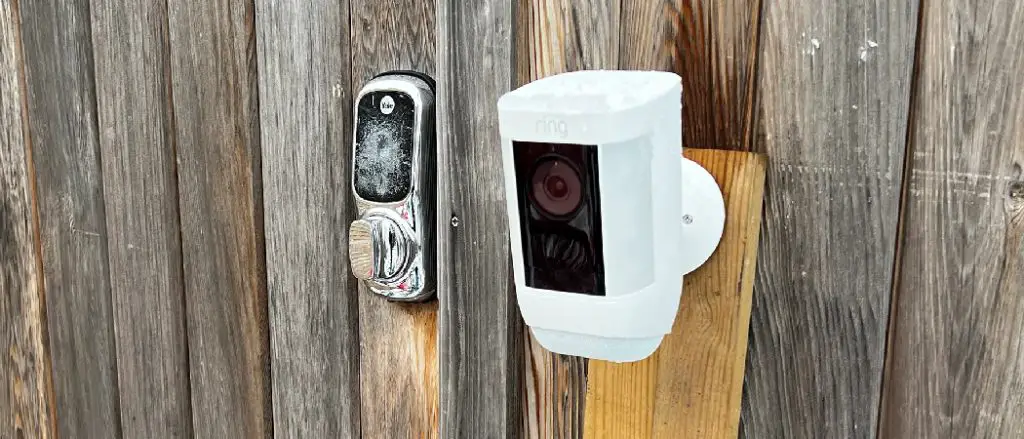
However, this proliferation brings with it a whispered question that lingers in the minds of guests, neighbors, and passersby: is it recording? Amidst rising privacy concerns and etiquette debates, understanding how to tell if a Ring camera is recording becomes more than just curiosity—it morphs into a modern necessity.
This article demystifies the subtle cues and indicators that reveal the status of these digital watchmen, ensuring that your next encounter with a Ring device leaves no room for guesswork.
Understanding Ring Camera Features
Different Ring Camera Models and Their Capabilities:
Before delving into how to tell if a ring camera is recording, it’s essential to understand the different models and their capabilities. Currently, there are five main versions of Ring cameras on the market:
1. Ring Video Doorbell
The original Ring camera, designed to be mounted at your front door, features two-way talk, motion-activated alerts, and live-streaming capabilities.
2. Ring Stick Up Cam
This versatile camera can be placed indoors or outdoors and comes with a rechargeable battery option or can be hardwired for continuous power.
3. Ring Floodlight Cam
As the name suggests, this camera combines a motion-activated HD camera with two bright LED floodlights, perfect for illuminating large outdoor spaces.
4. Ring Spotlight Cam
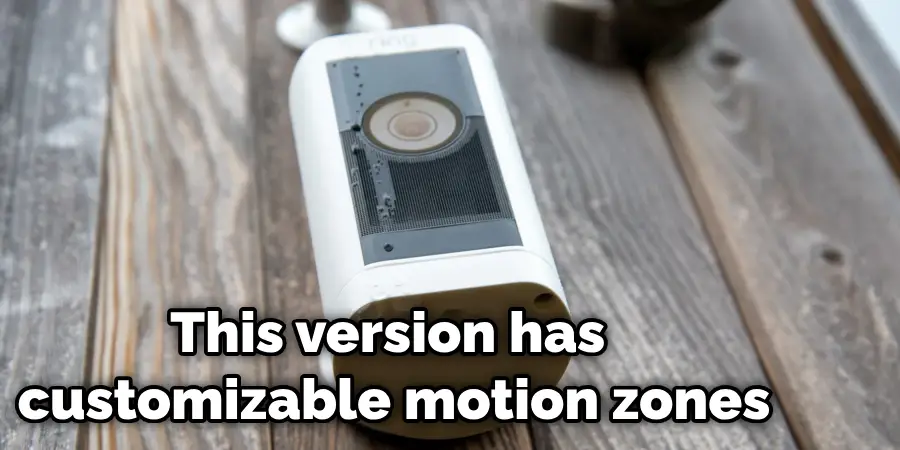
With similar capabilities to the Floodlight Cam, this version has customizable motion zones and remote-activated siren and spotlight features.
5. Ring Indoor Cam
The newest addition to the Ring family, this compact camera is designed for indoor use and features two-way talk, motion detection, and night vision.
Key Features of Ring Camera:
Regardless of the model, all Ring cameras have a few key features that help determine if they are recording:
Motion sensors:
Ring cameras are equipped with motion sensors that detect movement and trigger recordings and alerts. These sensors use infrared technology to differentiate between human movement and non-human activity, such as cars or animals.
LED indicators:
Most Ring cameras have LED lights around the lens that indicate different states, including armed/disarmed, live view on/off, and recording.
Live streaming:
All Ring camera models have the ability to live stream footage through the Ring app. This feature allows you to check in on your camera’s view at any time, even if it is not actively recording.
Cloud storage:
Ring cameras come with a subscription-based cloud storage service that stores recorded footage for a certain period. Without this service, the cameras can still record but will not save the footage for later viewing.
How to Tell If a Ring Camera Is Recording: Exploring Methods
Now that we understand the features of Ring cameras, let’s explore how to tell if one is recording:
Visual Cues: Signs the Camera is Active
Lights:
The lights on a Ring camera are essential indicators of its operational status. Typically, a blue light signifies that the camera is actively recording or someone is accessing the live view through the app. A red light usually indicates that the camera’s infrared night vision is enabled for low-light or night-time recording. It’s important to know that the display of lights varies across different models; some may not show a light during normal recording to remain inconspicuous.
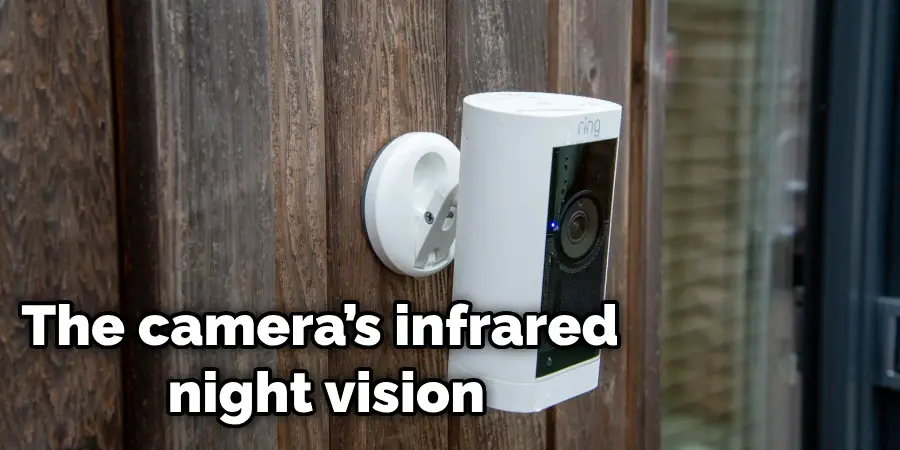
Physical Indicators:
Some Ring camera models show physical signs when active. For example, the light ring around the doorbells can illuminate, or the camera lens might move slightly if it has a mechanical feature for tracking motion. This visibility can vary from very subtle to obvious, depending on the device and settings.
App Notifications:
The Ring app is instrumental in notifying users about the camera’s activity. It sends push notifications to your smartphone or device when motion is detected or when someone presses the doorbell. Additionally, it provides real-time updates when someone accesses the live view, which guarantees that the user is informed about the current recording status.
Audio Cues:
Apart from visual and physical signs, Ring cameras might emit audio cues such as a chime when the doorbell is pressed or a distinct sound when motion is detected, depending on user settings and model specifications. These auditory signals are key in alerting both the homeowner and visitors of its operation and recording functionality.
Analyzing the Ring App & Notifications
The best way to determine if a Ring camera is recording is through the accompanying app and its notifications. Here’s how:
Check the App’s Dashboard:
The main dashboard on the Ring app displays all your connected devices. It shows the name of each device, along with a green or red indicator next to it, indicating that the device is online or offline, respectively. If the camera is online, it’s most likely recording when motion is detected, or live view is activated.
View Event History:
The Ring app also has an event history section that displays recorded footage from your cameras. You can use this to review past recordings and see if the camera was active during a specific time frame.
Check Device Settings:
Finally, you can check the device settings on the app to see if the camera is actively recording. Additionally, you can enable push notifications for motion and doorbell events, ensuring that you are always aware of when your Ring camera is in use.
Advanced Techniques: Utilizing Third-Party Tools
Apart from the Ring app and visual cues, there are a few advanced techniques for determining if a Ring camera is recording:
Third-Party Monitoring Services:
Some third-party services specialize in monitoring smart home devices, including Ring cameras. These services can provide real-time updates on your camera’s status and send alerts when it begins recording.
Network Traffic Analysis:
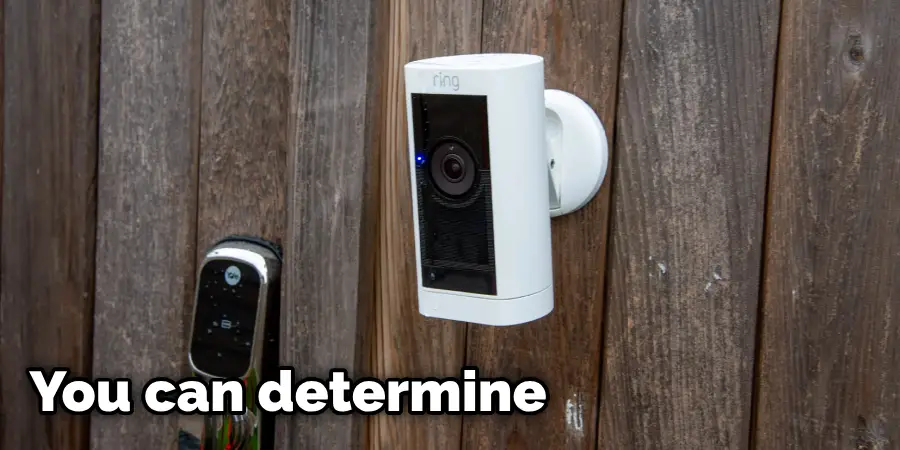
For tech-savvy individuals, tracking network traffic can also reveal if a Ring camera is recording. By monitoring the data being sent and received by the device, you can determine when it is actively transmitting video footage.
Utilize a Wi-Fi Analyzer:
If you have access to the camera’s network, you can use a Wi-Fi analyzer to monitor its traffic and see when it is recording.
By following these methods, you will know the anatomy of how to tell if a ring camera is recording. With its advanced features and customizable settings, Ring cameras provide peace of mind by allowing you to monitor and record activity in and around your home.
Legal Considerations and Privacy Rights
Understanding the Laws and Regulations
While it is essential to know if a Ring camera is recording, it’s also crucial to understand the legal aspects surrounding its use. Here are some fundamental laws and regulations that govern the use of security cameras:
Federal Laws:
The U.S. Constitution guarantees privacy rights for its citizens, including protection from unreasonable search and seizure. This means that law enforcement officers cannot enter your property or access the footage from your Ring camera without a warrant or permission.
State Laws:
Several states have their own laws and regulations regarding security cameras, including where they can be placed and how long footage can be retained. It’s important to research and understand the laws in your state before installing a Ring camera.
Local Regulations:
Local governments may also have their own set of rules for security cameras. For example, some cities may require residents to register their cameras with the local police department. It’s crucial to be aware of any regulations concerning security cameras in your area.
Protecting Your Privacy Rights
While Ring cameras are a useful tool for home security, it’s essential to respect the privacy rights of others. Here are some ways to ensure your Ring camera is not infringing on anyone’s privacy:
Proper Placement:
Ring recommends installing cameras at a reasonable height and angle to avoid capturing private areas, such as windows or neighboring properties. It’s also important to consider the field of view of the camera and adjust it accordingly.
Use Privacy Zones:
Some Ring cameras have the option to set privacy zones, which can block off certain areas of the camera’s field of view from recording. This is useful for blocking out windows or neighboring properties.
Enable Motion Zones:
Motion zones allow you to specify specific areas where motion should be detected by the camera. By setting these zones, you can avoid capturing unnecessary footage and focus on high-traffic areas only.
Be Transparent:
If you are using a Ring camera for security purposes, it’s essential to inform visitors and residents of its presence. This lets them know that they may be recorded while on your property.
By following these measures, you can ensure that your use of a Ring camera is both effective and respectful of others’ privacy rights.
The Impact of Ring Cameras on Home Security
Deterrence of Criminal Activity
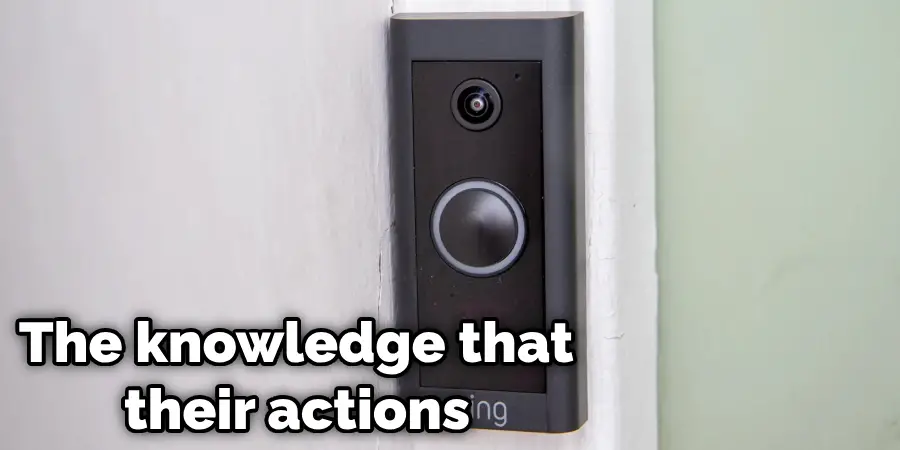
Ring cameras have proven to be effective in deterring criminal activity in neighborhoods across the country. Their visible presence alone acts as a warning to potential intruders who may be considering attempting a break-in or theft. The psychological barrier created by the knowledge that their actions could be recorded and viewed later is a significant deterrent, making Ring cameras a critical component of modern home security strategies.
Providing Evidence to Law Enforcement
When crimes do occur, Ring cameras play a vital role in providing evidence to law enforcement agencies. High-resolution video footage can be used to identify perpetrators, understand the sequence of events, and may even be admissible in court. Law enforcement officers often request footage from homeowners to help solve crimes, and the wide adoption of Ring cameras has created a vast network of evidence that can be pivotal in investigations.
Alternative Solutions for Peace of Mind
While Ring cameras offer a robust solution for home security, understanding and addressing the concerns of those who might feel uncomfortable being recorded is equally important. Here are some alternative approaches that promote transparency and trust within communities:
Open Communication with Neighbors:
Engaging in dialogue with your neighbors about security concerns and the presence of cameras can help alleviate any discomfort. By explaining the purpose and benefits of the Ring cameras and ensuring them that their privacy will be respected, you can build a safer and more trusting community environment.
Clear Signage as Deterrent:
Another effective deterrent that doesn’t involve potential privacy issues is the use of clear signage. Signs that indicate the area is under surveillance can discourage unwanted activity and can be used in conjunction with or as an alternative to security cameras.
Adopting Alternative Security Solutions:
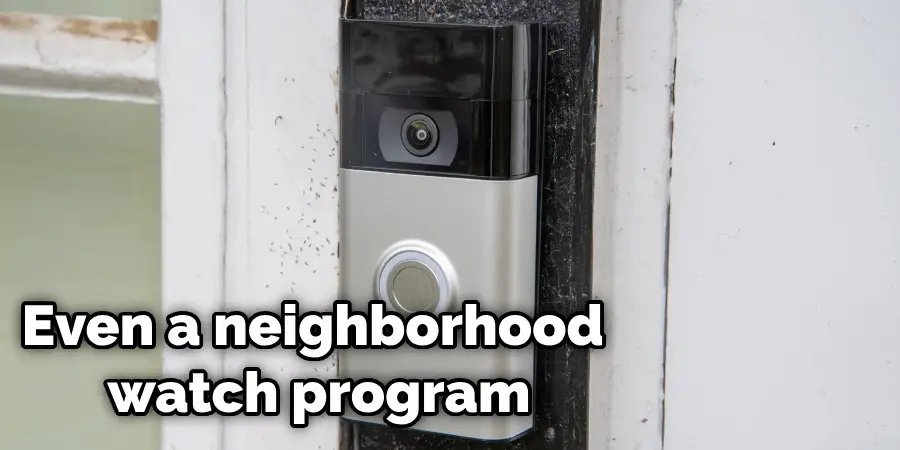
For those who prefer not to use video recording devices, there are several other security measures to consider. These include motion-activated lights, secure door and window locks, alarm systems, and even a neighborhood watch program. These solutions can provide peace of mind without the need for video surveillance.
Leveraging Community Apps and Platforms:
Leveraging neighborhood apps and online platforms for community-based security can keep everyone informed about safety and incidents without individual surveillance. This fosters a sense of community, with everyone looking out for each other.
Regular Neighborhood Meetings:
Establishing regular neighborhood meetings to discuss safety and security concerns gives residents a forum to voice their opinions and contributes to building mutual trust. These meetings can be a place to coordinate collective efforts and share best practices for security without over-relying on personal surveillance technology.
By considering these alternative measures, individuals and communities can find the right balance between effective security and the preservation of privacy. Open communication, respect for one another’s concerns, and collaborative efforts are key in creating a secure yet comfortable environment for all.
Conclusion
In summary, while Ring cameras undeniably enhance the security of our homes and deter criminal activities, their use must always be balanced with the consideration of privacy rights. As homeowners and community members, we must stay well-informed about our state laws and local regulations and implement best practices like proper camera placement, using privacy features, setting up motion zones, and being transparent about their usage.
In doing so, we protect our homes and maintain respectful boundaries with our neighbors. We must stay abreast of the latest updates and changes regarding Ring’s features and policies, such as knowing how to tell if a Ring camera is recording and what that entails for the privacy of those around us.
Let’s advocate for the responsible use of surveillance technology and commit to upholding the privacy of our communities. We encourage you to take proactive steps to understand the capabilities of your security devices and use them in a way that safeguards the dignity and rights of others. Engage with neighbors, consider alternative security measures, and participate in community forums to ensure that safety doesn’t come at the cost of privacy. Together, we can create a secure and respectful environment for everyone.

